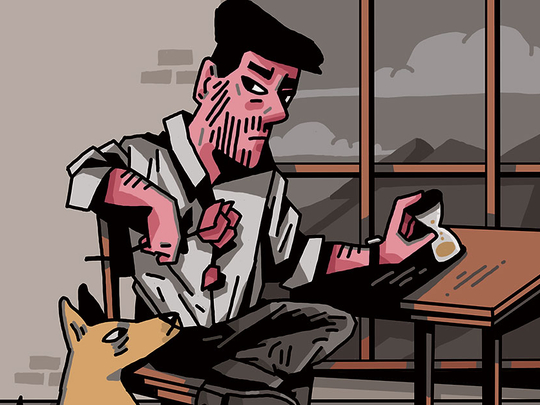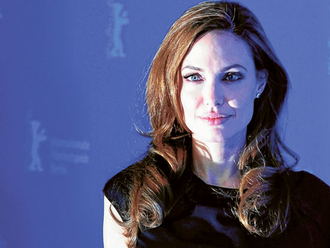
By Matt Haig, Canongate Books, 325 pages, $26
The first thing we discover about Tom Hazard, the protagonist of Matt Haig’s new novel, How to Stop Time, is that he is very, very old. He is old, he tells us, “in the way that a tree, or a quahog clam, or a Renaissance painting is old.” Born in France in 1581, he is fast approaching his 440th birthday. Not that anyone would know it to look at him, since outwardly he appears to be an ordinary man in his 40s. This is because Tom has a condition, rare but not unique, known as anageria. People with anageria age much more slowly than ordinary people, at a rate of roughly one year for every 15 ordinary human years. Although Tom lives life at the same pace as everyone else, judging by his appearance, it would seem that “only a decade passes between the death of Napoleon and the first man on the moon.” Immune to almost all human diseases, and assuming he avoids a violent death, Tom can expect to live until he is around 950. With four centuries of life under his belt, he is only just approaching middle age. And like many middle-aged men, he appears to be suffering something of a midlife crisis.
This is not, of course, a new idea. Ever since Jonathan Swift’s Gulliver travelled to the nation of Luggnagg, where the “struldbrugs” age but never die, writers have used the notion of immortality to examine the possibilities and limits of a human life. In recent years Audrey Niffenegger’s The Time Traveler’s Wife and Kate Atkinson’s Life After Life have both played inventively with the idea of lives lived outside of ordinary time.
Haig himself touched on the idea in his previous novel, The Humans, which saw an eccentric English mathematician unlocking the secret of prime numbers and thereby the means to rid the world of illness and death. Fearful of the power this would give violent and primitive humans, an advanced alien super-race from the planet Vonnadoria hurriedly dispatched one of their kind to extinguish all traces of his theory. The Humans was warmhearted, sharply observed and often laugh-out-loud funny, funny enough to forgive Haig’s alien his regrettable fondness for fortune-cookie philosophy.
In How to Stop Time, Haig has ditched the comedy for something more melancholic. Others of Tom’s kind - known as albatrosses (or “albas”), after the bird thought in Victorian times to be exceptionally long-lived — consider their lives infinitely superior to ordinary humans (or “mayflies”) who live so briefly. Tom fiercely disagrees. To him his longevity is a curse, forcing him from an early age to live alone. His unchanging appearance arouses hostility and suspicion. Superstitious neighbours condemn his mother as a witch. Similar accusations dog his beloved wife, Rose, and daughter, Marion, until he must leave them for their own safety. In the 400 years since Rose’s death he has roamed the world, unwilling to settle, unable to find happiness. The only thing that keeps him from taking his own life is the knowledge that Marion has inherited his condition and is out there somewhere, waiting for him to find her. When he is approached by the Albatross Society, a secret association designed to protect albas from the twin threats of superstition and science, he hopes its mastermind, the hedonistic Hendrich Pietersen, will be able to help him track her down.
The resulting novel is part love story and part thriller, though not quite enough of either. Almost 500 years is quite something to compress into a conventionally sized novel, and Haig takes us on a whistle-stop tour through the highlights of Tom’s life, playing the lute in Shakespeare’s Globe, voyaging with Captain Cook to the Pacific islands, drinking cocktails in Paris with Scott and Zelda Fitzgerald. In the rather less star-studded present he is teaching history in a modern London high school, and it is these sections of the novel that are the most convincing. Haig remains a keen-eyed observer of contemporary life — a plastic bag “floats far over our heads like a cartoon ghost” — and his dialogue has snap and charm. In the past, however, he is on shakier ground; his characters seem to exist less in their historical surroundings than to have pushed their faces through the holes in painted carnival cutouts. Shakespeare is a particularly clumsy creation, a man who quotes himself in conversation.
In the end, though, it is Tom himself who most bogs down the narrative. More than once he apologises for his “heaviness”, and with good reason. Weary of life, still grieving his dead wife some four centuries after her death (“I need ‘closure’, as people say these days”), he makes for a frustratingly passive protagonist. And while the 9-year-old Marion likes to quote Montaigne, Tom’s accumulated half a millennium of wisdom would seem to owe more to Twitter and the literature of self-help. Italicised gems like “People you love never die” and “The thing that defines a human being is being a human” rapidly pall, leaving the reader craving some of the sharp-edged black humour that made The Humans such a delight. The alien from Vonnadoria, it seems, is back on earth with a new assignment and a fresh supply of platitudes. Only this time it is no laughing matter.
–New York Times News Service
Clare Clark’s sixth novel, In the Full Light of the Sun, will be published next year.









